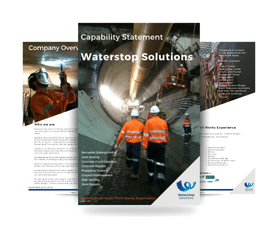Despite its importance, the remediation sector has long faced a significant challenge: the absence of formal qualifications designed to address its unique demands. Licensed trade professionals often rely on training developed for new construction, which is rarely suited to the realities of repair and restoration.
The challenges of remediation include compatibility with outdated materials, addressing the effects of environmental wear, and adapting to evolving construction trends. Older structures often feature materials and methods that are now obsolete, requiring a tailored approach to ensure durability and compatibility. Without specialised training, professionals may focus solely on visible symptoms rather than identifying and addressing the root causes of structural issues, leading to temporary or ineffective repairs.
For more details about the history and development of this diploma, explore our blog on the History of Remediation Durability Practices.
Bridging the Gap Between Standards and Realities
The Australian construction framework highlights a broader disconnect: remediation is rarely represented in the creation or evolution of construction standards. These standards typically focus on new builds, leaving them misaligned with the needs of repair and restoration work. As a result, remediators’ expertise often goes untapped, perpetuating outdated practices and limiting the practical application of standards to real-world scenarios.
This disconnect underscores the urgent need for a qualification like the Diploma of Built Environment Remediation Practices, which bridges the gap between industry practices and educational opportunities.
Raising the Bar: Formalising Remediation Training
The diploma was developed by Harold Du Toit and Chris Anderson of Waterstop Solutions Pty Ltd, in collaboration with Dr. Elaine Roberts and Dr. Heather McCosker-Howard. This collaborative effort has resulted in a program that directly addresses the skills and knowledge gaps in the Built Environment Industry that other training packages do not cover.
This qualification equips professionals to apply integrated theoretical and practical concepts to built environment structures and assets, supporting skilled and paraprofessional roles such as builders, engineers, architects, and construction managers.
Learn how this qualification can transform your career and the industry — explore the unit description here.
Nationally recognised training (NRT), where you can find updates on training packages, qualifications, units of competency, skill sets and accredited courses such as 11095NAT – Diploma of Built Environment Remediation Practices.
Transforming the Industry Through Education
The Diploma of Built Environment Remediation Practices is the first course of its kind, offering a formal training pathway specifically tailored to the remediation sector. It represents a significant step forward, fostering consistency, accountability, and more effective outcomes in structural repair and restoration.
By addressing both the visible symptoms and the underlying causes of structural issues, the diploma empowers remediation professionals to deliver solutions that are not only effective but also durable. This contributes to the safety, longevity, and integrity of built assets, ensuring that remediation meets the highest standards of quality.
Remediation Durability Practices Pty Ltd are excited to share this achievement with the Built Environment Industry. Together, we are shaping the future of remediation and leading the way toward more resilient and reliable outcomes for the structures we depend on every day.



